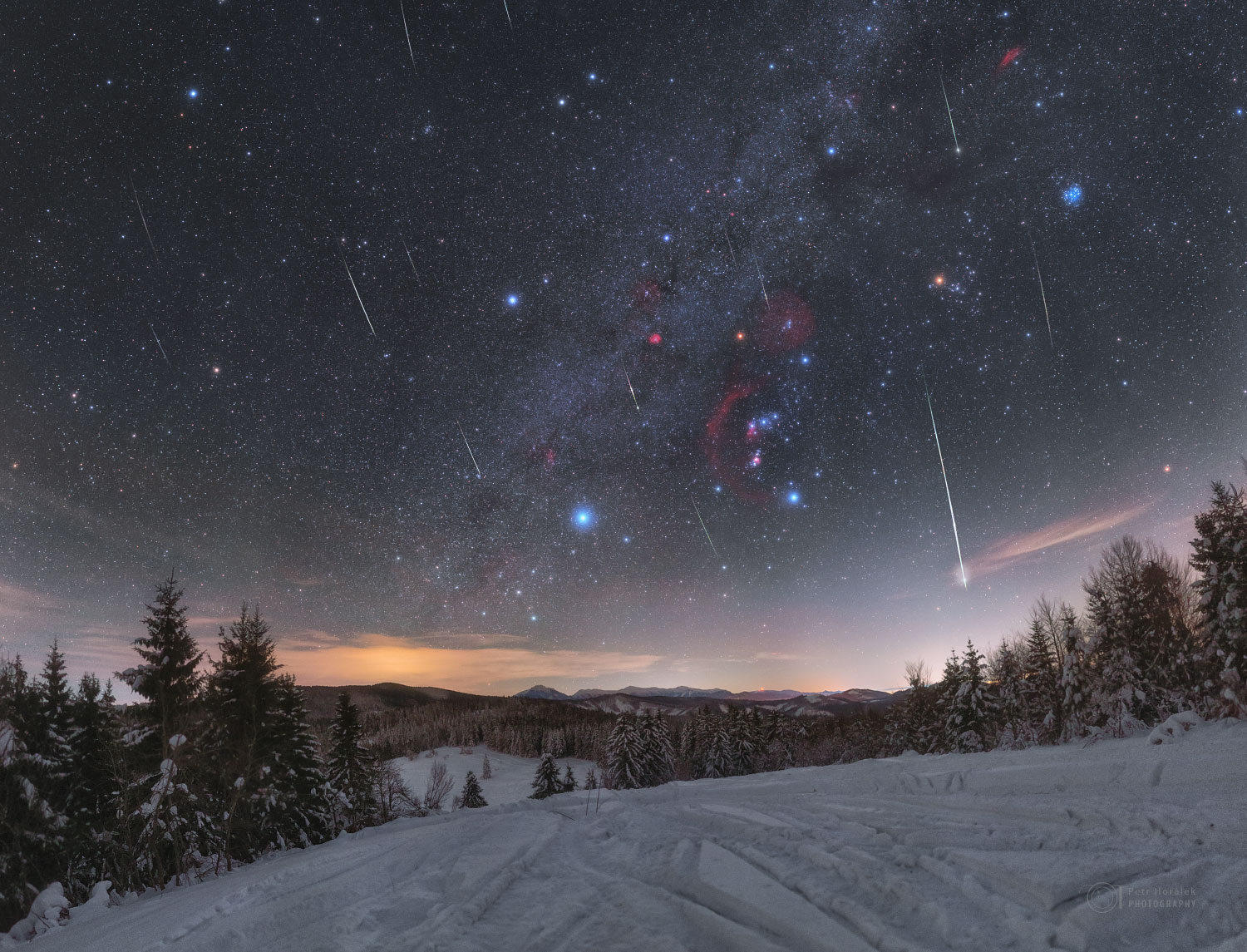穿过猎户座的象限仪座流星雨
2020 January 20
Quadrantid Meteors through Orion
Image Credit & Copyright: Petr Horálek
Explanation: Why are these meteor trails nearly parallel? Because they were all shed by the same space rock and so can be traced back to the same direction on the sky: the radiant of the Quadrantid Meteor Shower. This direction used to be toward the old constellation of Quadrans Muralis, hence the name Quadrantids, but when the International Astronomical Union formulated its list of modern constellations in 1922, this constellation did not make the list. Even though the meteors are now considered to originate from the recognized constellation of Bootes, the old name stuck. Regardless of the designation, every January the Earth moves through a dust stream and bits of this dust glow as meteors as they heat up in Earth’s atmosphere. The featured image composite was taken on January 4 with a picturesque snowy Slovakian landscape in the foreground, and a deep-exposure sky prominently featuring the constellation Orion in the background. The red star Betelgeuse appears unusually dim — its fading over the past few months is being tracked by astronomers.
穿过猎户座的象限仪座流星雨
图片来源及版权:Petr Horálek
说明:为什么这些流星余迹都几乎是平行的?因为他们都是从同一颗地外空间中的岩石上脱落下来的,这些轨迹反向都指向天空中同一个方位:象限仪座流星雨的辐射点。这个方向曾经是一个古老的星座象限仪座,因此得名象限仪流星群,但是象限仪座不在1922年国际天文学会指定的现代星座中。尽管现在辐射点被认为在牧夫座,这个古老的名字依然在被沿用。不管叫什么名字,每年一月份,地球都会穿过一个尘埃流,很少的尘埃会在地球大气层中被加热发光,形成流星。这张照片拍摄于1月4日,前景是风景如画的斯洛伐克雪景,背景是对深空长时间曝光的猎户座。画面中,猎户座左上红色的参宿四呈现不寻常的暗淡,天文学家们在过去几个月一直在追踪记录它亮度变暗的过程。

